Challenging the Mystery of Arctic Climate Change
*This article was originally published in ArCS II News Letter No.5 (August 2022).
| Dr. Syukuro Manabe was awarded the Nobel Prize in Physics in 2021, and the elucidation of climate change mechanisms and advancement of global climate prediction are coming into the spotlight. Climate models are being developed, improved, and refined all around the world. Here, Dr. Takuro Aizawa (National Institute of Polar Research / Meteorological Research Institute, Japan) and Dr. Naga Oshima (Meteorological Research Institute, Japan), who are working on the ArCS II atmospheric research program of elucidating climate change mechanisms in the Arctic and developing climate models, explain their recent research results using the climate model developed at the Meteorological Research Institute. |  |
 |
 |
 |
| Dr. Takuro Aizawa | Dr. Naga Oshima |
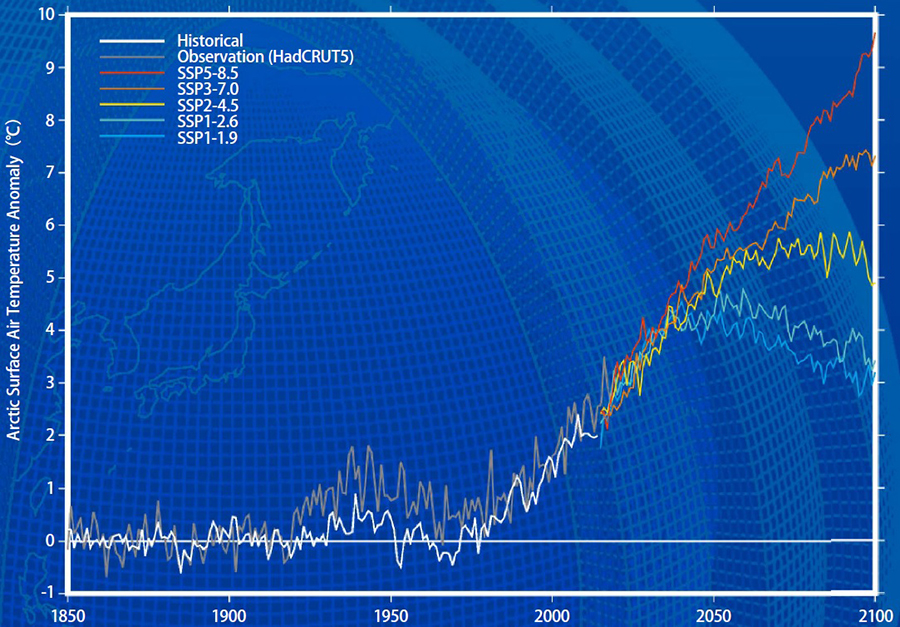
Two Major Mysteries in Arctic Climate Change
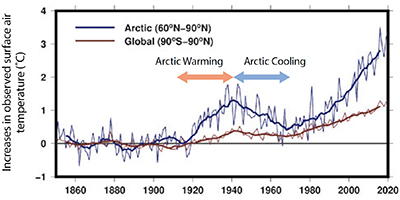
The first mystery is Arctic warming during the early 20th century. Despite lower atmospheric CO2 concentrations than today and its slower increasing trend, warming proceeded at the same level as today. The second mystery is Arctic cooling during the mid-20th century, despite the monotonic increase in atmospheric CO2 concentrations (Figure 2).
Factors that affect global surface air temperature include external forcings (such as greenhouse gases, aerosols, solar activity, and volcanic activity) and internal variability (such as El Niño and La Niña events, which are caused by the complex interactions of the air-sea-land surface). As there is still not enough quantitative assessment of the causes of Arctic warming and cooling, the discussion continues.
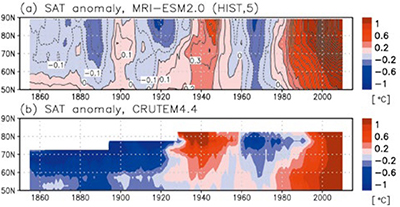
A useful way to resolve this problem is to reproduce past climates through climate models. The results of the international research project “Coupled Model Intercomparison Project Phase 6 (CMIP6),” which collected and compared the latest climate models developed around the world, are cited in the Sixth Assessment Report of the Intergovernmental Panel on Climate Change (IPCC). The Meteorological Research Institute’s climate model MRI-ESM2.0 is participating in this project.
Many models that participated in CMIP6 reproduced past Arctic surface temperatures and other meteorological factors better than previous models (Figure 3). The analysis of these climate models has made it possible to investigate the causes of Arctic climate change more accurately, leading to this clarification of the mechanism of Arctic temperature change.
The First Mystery: What Caused the Arctic Warming During the Early 20th Century?
An analysis of the contribution of each factor to the 30-year warming from 1911 to 1940 (Figure 4) shows that solar and volcanic activities contributed significantly to the warming, while greenhouse gases and aerosols made a smaller contribution. However, this result alone is not enough to explain the observed Arctic warming. The Arctic warming during this period was caused by a combination of enhanced solar activity, reduced volcanic activity, and multidecadal internal variability. We found that external natural forcings and unforced multidecadal internal variability contributed to warming at a similar level. [Aizawa et al. (2021) https://doi.org/10.1029/2020GL092336 ]
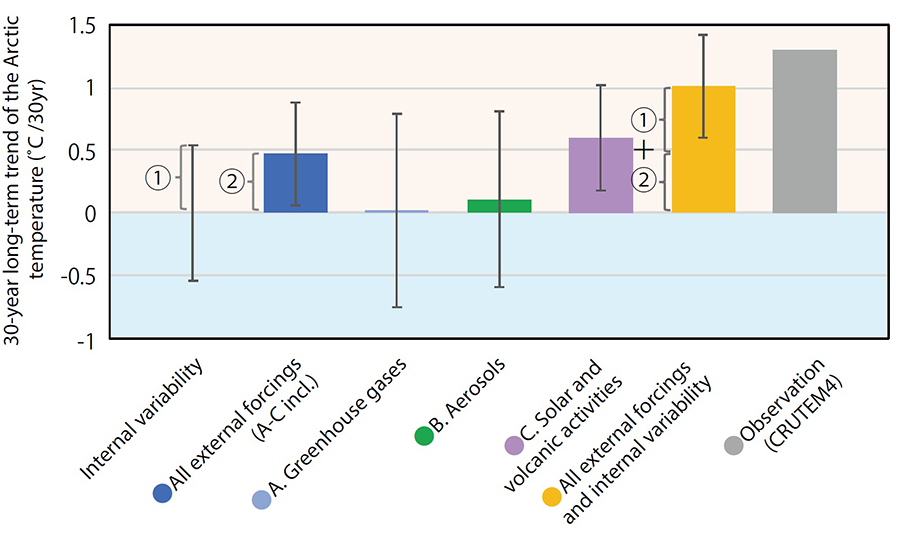
The Second Mystery: What Caused the Arctic Cooling in the Mid-20th Century?
We have also analyzed the factors for the Arctic cooling around 1940-1970 (Figure 5). The most significant contributor to the cooling was found to be anthropogenic aerosols. Solar and volcanic activities were found to contribute relatively little, with greenhouse gases acting to mitigate the cooling. Anthropogenic aerosols alone are not enough to explain the observed cooling but considering the multidecadal internal variability as is the case with the Arctic warming in the first half of the 20th century, the cooling level is consistent with the observations. Thus, the Arctic cooling in the mid-20th century was influenced by a combination of anthropogenic aerosol and multidecadal internal variability. [Aizawa et al. (2022) https://doi.org/10.1029/2021GL097093 ]
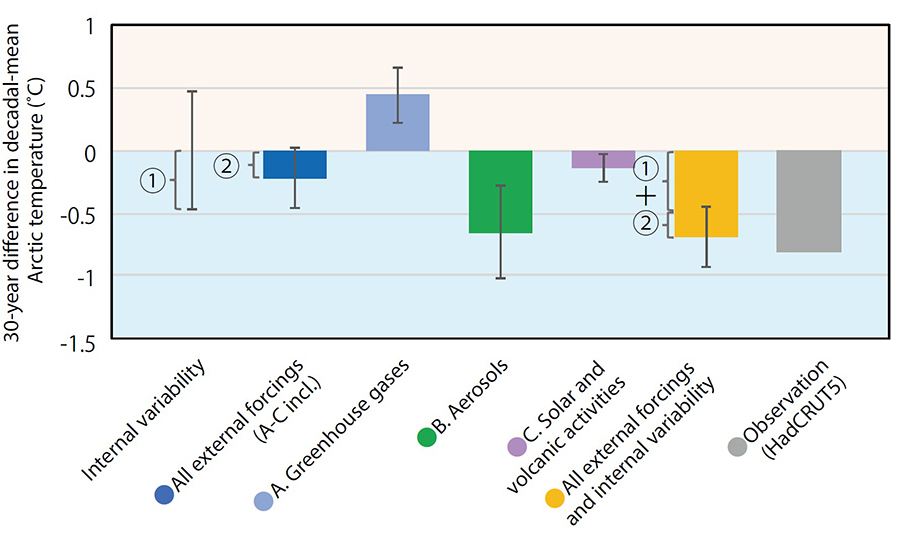
How Will the Arctic Climate Change in the Future?
In the Arctic region, warming is progressing at more than twice the rate of the global average (Figure 2). Even if cooling caused by a multidecadal internal variability occurs in the future, its effect will be only to mitigate the temperature increase and will not stop the warming of the Arctic. Contrary to this, if the internal variability intensifies warming, it could further accelerate the current warming trend.
Our studies have now provided a quantitative explanation of the causes of the warming and cooling of the Arctic during the 20th century. Results from the Meteorological Research Institute’s climate model were contributed to the IPCC and the Arctic Council as the scientific basis for climate change strategy. We believe that we can make further contributions to the understanding of climate change through the continuing development of climate models and the implementation of analytical research using observational and simulated data.
